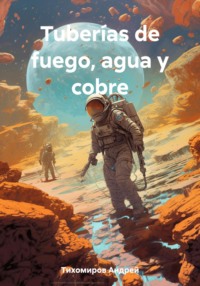
Полная версия
Structural levels and systemic organization of matter

Андрей Тихомиров
Structural levels and systemic organization of matter
Hawking's theory of black holes
Theoretical physicists from Radboud University in Nijmegen conducted a study testing the correctness of Stephen Hawking's theory about black holes. The results obtained partially confirmed it, and also allowed us to put forward the assumption that everything in the universe is gradually evaporating. A new theoretical study was conducted by physicists Michael Vondrak, Walter van Suilek and Heino Falke. They tested the theory of the famous theoretical physicist Stephen Hawking about black holes and found out that he was right in many ways, but not in everything. At one time, Hawking, using a combination of quantum physics and Einstein's theory of gravity, argued that spontaneous generation and annihilation of pairs of particles should occur near the event horizon. This is called the "point of no return", that is, an invisible line beyond which there is no escape from the gravitational force of a black hole for any objects, even the smallest ones.
A particle and its antiparticle are born from a quantum field for a very short time, after which they immediately annihilate. But sometimes it still happens that one particle falls into a black hole, and the other flies out of it. This phenomenon is called Hawking radiation. According to Hawking himself, such a process should eventually lead to the evaporation of a black hole.
In a new study, theoretical confirmation has been obtained that due to Hawking radiation, black holes will eventually evaporate. But calculations at the same time showed that the event horizon is not as important as it was thought until now. Gravity and the curvature of spacetime also cause Hawking radiation. This means that all large objects in the universe, including the remnants of stars, will eventually evaporate.
The study showed that new particles can be created far beyond the event horizon. If it was previously thought that no radiation was possible without an event horizon, then a new study shows that there is no urgent need for this horizon. This means that objects without an event horizon, such as the remnants of dead stars and other large objects in the universe, also have this kind of radiation. The universe is evaporating, as are black holes. This changes not only our understanding of Hawking radiation, but also our view of the universe and its future.
Microcosm structures
The microcosm is a world of extremely small, not directly observable micro–objects, the spatial dimension of which is calculated from 10-8 to 10-16 cm, and the lifetime is from infinity to 10-24 seconds. In the field of the real, experimentally studied world, physicists fix dimensions of the order of 10-16 cm (a thousand times smaller than the size of atomic nuclei). The microcosm is distinguished as an object of quantum mechanics, including relativistic, which takes into account both quantization and relativity (relativity) of processes in the microcosm, their structural, space-time and energy characteristics.
The discovery of the electron meant the atom's loss of the status of a structurally indivisible element of matter and thereby a radical transformation of classical ideas about objective reality. New discoveries made it possible, firstly, to reveal the existence in objective reality not only of the macro-, but also of the microcosm; secondly, to confirm the idea of the relativity of truth, which is only a step on the path of cognition of increasingly fundamental properties of nature; thirdly, to prove that matter does not consist of an "indivisible primary element" (atom), but of an infinite variety of phenomena, types and forms of matter and their interrelations. First of all, the electron was discovered. Its characteristics were determined in 1897 by J. J. Thomson. It was found that the hydrogen ion, which Rutherford called a proton in 1914, is an elementary carrier of a positive charge. In 1920 Rutherford predicted the existence of a neutron, which was discovered in 1932. In the same year, the positron was discovered.
Elementary (subnuclear) particles are called such particles that cannot be split into their component parts. They are divided into stable and unstable. All elementary particles have such basic features:
particles, while they exist, are unchanged.
the particles of the same grade are absolutely identical, indistinguishable;
particles can be born and disappear.
According to the standard model, all matter (including light) It consists of 12 fundamental elementary particles and 12 interaction carrier particles. This number includes quarks (which make up protons and neutrons), electrons, photons and other elementary particles.
Wave-particle dualism is inherent in all elementary particles: on the one hand, particles are single, indivisible objects, on the other hand, they are in a certain sense "smeared" in space. Under certain conditions, such "smearing" can even take macroscopic dimensions. Quantum mechanics describes a particle using the so-called wave function, which determines not exactly where the particle is, but where it could be and with what probability. Thus, the behavior of particles is fundamentally probabilistic in nature: due to the probabilistic "smearing" of a particle in space, we cannot determine its location with absolute certainty (the uncertainty principle). But in the macrocosm, dualism is insignificant.
The reasons why there is such a set of particles, the reasons for the presence of mass in some of them and a number of other parameters are still unknown. Physics is faced with the task of constructing a theory in which the properties of particles would follow from the properties of vacuum.
To date, several hundred elementary particles have been discovered. Naturally, such a large number of elementary particles need a specific classification.
All elementary particles are characterized by such parameters as rest mass (a photon moving at the speed of light has a rest mass equal to zero, an electron is the lightest with a non–zero rest mass, protons and neutrons are 2000, and a Z-particle is 200,000 times heavier than an electron), electric charge (it is always a multiple of the electron charge equal to -1, or not at all), spin (the angular momentum of the particle, bosons have integer spins – 0, 1, 2, and fermions have half–integers – for example, ½), and lifetime (stable – electron, proton, photon and neutrino and unstable, with a lifetime of 15 minutes to trillionths or smaller fractions of a second).
The classification of elementary particles is based on their ability to participate in certain types of fundamental interactions.
Classification of elementary particles:
Photons are quanta of the electromagnetic field, particles with zero rest mass, do not have strong and weak interactions, but participate in the electromagnetic.
Leptons are elementary particles that do not participate in the strong interaction. The class of leptons consists of six particles (electron, muon, tau-lepton and three types of neutrinos) and six antiparticles.
Hadrons are particles that are capable of participating in a strong interaction. There are a lot of hadrons. They consist of quarks, and all their wide variety can be reduced to a combination of quarks – elementary particles with a fractional electric charge of 1/3 or 2/3. The class of quarks consists of six particles and six antiparticles. Quarks do not occur in a free state, but form bound compounds.
Baryons are hadrons formed by combinations of three quarks (proton, neutron, etc.).
Mesons are hadrons consisting of a quark and an antiquark, these are highly interacting unstable particles.
Particles – carriers of interactions: photon (electromagnetic interaction: a photon has no mass, which causes a large radius of this interaction), mesons (weak interaction), gluons (strong interaction), gravitons (gravitational interaction).
Quarks: It is now known that hadrons consist of quarks and antiquarks. To date, quarks and antiquarks are considered indivisible, there are 6 types of them, which are called "flavors". The most unusual property of quarks is that they exist only inside hadrons and are not observed as independently existing particles. they have a fractional electric and baryon charge. Baryons and mesons are made up of quarks.
Elementary particles can also be classified as follows:
1) By spin: into fermions (half-integer spin) and bosons (whole spin).
2) According to the lifetime of the particle, it can be divided into: 1) stable (electron, proton, photon, neutrino); 2) quasi—stable – decaying due to electromagnetic and weak interactions (neutron); 3) unstable- decaying due to strong interaction (π mesons).
3) By mass, all particles are divided into three classes:
baryons (heavy): proton, neutron, hyperons, part of resonances. Of these, the proton is stable. They are all fermions. Have a baryon charge of +1. They participate in all types of interactions.
Mesons (medium, intermediate): pi-mesons, ka-mesons, etc. Unstable. Are bosons (zero or integer spin). There is no baryon charge. They participate in all types of interactions. Baryons + mesons = hadrons.
leptons (light): muon, neutrino, electron. Muons are fermions, do not participate in strong interactions and have a lepton charge.
Outside of these classes is a photon: not a lepton and not a hadron. There is no lepton charge, it does not participate in strong interactions. Participates in electromagnetic interactions, its spin = 1, and rest mass = 0.
Under certain conditions, a particle has a "double", an antiparticle with the opposite sign. Antiparticles have the same masses, lifetime, spin, isospin as particles. When a particle and an antiparticle meet each other, they annihilate, i.e. they turn into other particles.
The main provisions of modern atomistics:
an atom is a complex material structure, it is the smallest particle of a chemical element;
each element has varieties of atoms (contained in natural objects or artificially synthesized);
atoms of one element can transform into atoms of another; these processes are carried out either spontaneously (natural radioactive transformations) or artificially (through various nuclear reactions).
The substance we encounter in everyday life consists of atoms. Atoms include an atomic nucleus consisting of protons and neutrons, as well as electrons "rotating" around the nucleus (quantum mechanics uses the concept of an "electron cloud"). Protons and neutrons belong to hadrons (which consist of quarks). It should be noted that in laboratory conditions it was possible to obtain "atoms" consisting of other elementary particles.
The atoms of each chemical element have the same number of protons in their composition, called the atomic number or charge of the nucleus. However, the number of neutrons can vary, so one chemical element can be represented by several isotopes. Currently, over 110 elements are known, the most massive of which are unstable.
Atoms can interact with each other to form chemicals. The interaction takes place at the level of their electronic shells. Chemicals are extremely diverse. Science has not yet solved the problem of accurately predicting the physical properties of chemicals.
Elementary particles. Atom models.
Elementary particle is a collective term referring to micro—objects on a subnuclear scale, which at the moment in practice cannot be split into component parts.
However, some elementary particles (electron, neutrino, quarks, etc.) are currently considered structureless and are considered as primary fundamental particles. Other elementary particles (the so—called composite particles, including the particles that make up the nucleus of an atom – protons and neutrons) have a complex internal structure, but nevertheless, according to modern ideas, it is impossible to divide them into parts due to the confinement effect.
In total, more than 350 elementary particles have been discovered together with antiparticles. Of these, the photon, electron and muon neutrinos, electron, proton and their antiparticles are stable. The remaining elementary particles spontaneously decay exponentially with a time constant from about 880 seconds (for a free neutron) to an infinitesimal fraction of a second (from 10-24 to 10-22 seconds for resonances).
The structure and behavior of elementary particles is studied by elementary particle physics.
All elementary particles obey the principle of identity (all elementary particles of the same kind in the Universe are completely identical in all their properties) and the principle of particle-wave dualism (each elementary particle corresponds to a de Broglie wave).
All elementary particles have the property of interconvertibility, which is a consequence of their interactions: strong, electromagnetic, weak, gravitational. Interactions of particles cause transformations of particles and their aggregates into other particles and their aggregates, if such transformations are not prohibited by the laws of conservation of energy, momentum, angular momentum, electric charge, baryon charge, etc.
The main characteristics of elementary particles are: lifetime, mass, spin, electric charge, magnetic moment, baryon charge, lepton charge, strangeness, charm, charm, truth, isotopic spin, parity, charge parity, G-parity, CP-parity, T-parity, R-parity, P-parity.
All elementary particles are divided into two classes:
Stable elementary particles are particles that have an infinitely long lifetime in the free state (proton, electron, neutrino, photon, graviton and their antiparticles).
Unstable elementary particles are particles that decay into other particles in a free state in a finite time (all other particles).
All elementary particles are divided into two classes:
Massless particles are particles with zero mass (photon, gluon).
Particles with nonzero mass (all other particles).
All elementary particles are divided into two classes:
bosons are particles with whole spin (for example, photon, gluon, mesons, Higgs boson);
fermions are particles with half-integer spin (for example, electron, proton, neutron, neutrino).
Elementary particles are divided into the following groups:
Composite particles
Hadrons are particles involved in all kinds of fundamental interactions. They consist of quarks and are subdivided, in turn, into:
Конец ознакомительного фрагмента.
Текст предоставлен ООО «ЛитРес».
Прочитайте эту книгу целиком, купив полную легальную версию на ЛитРес.
Безопасно оплатить книгу можно банковской картой Visa, MasterCard, Maestro, со счета мобильного телефона, с платежного терминала, в салоне МТС или Связной, через PayPal, WebMoney, Яндекс.Деньги, QIWI Кошелек, бонусными картами или другим удобным Вам способом.











